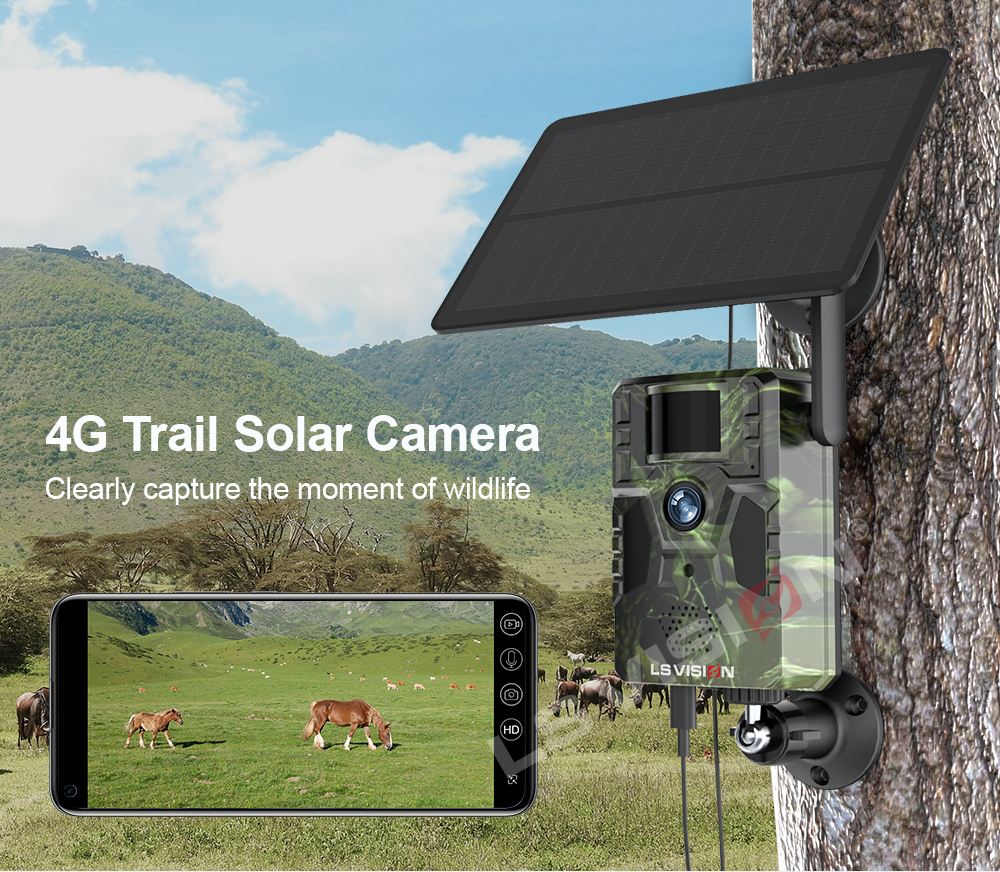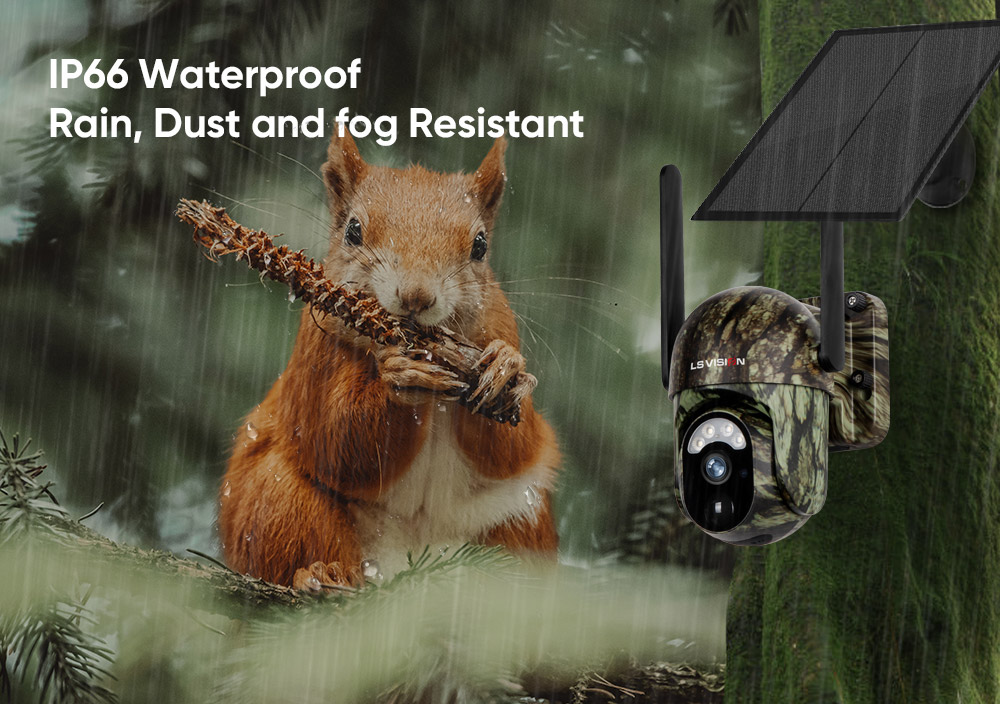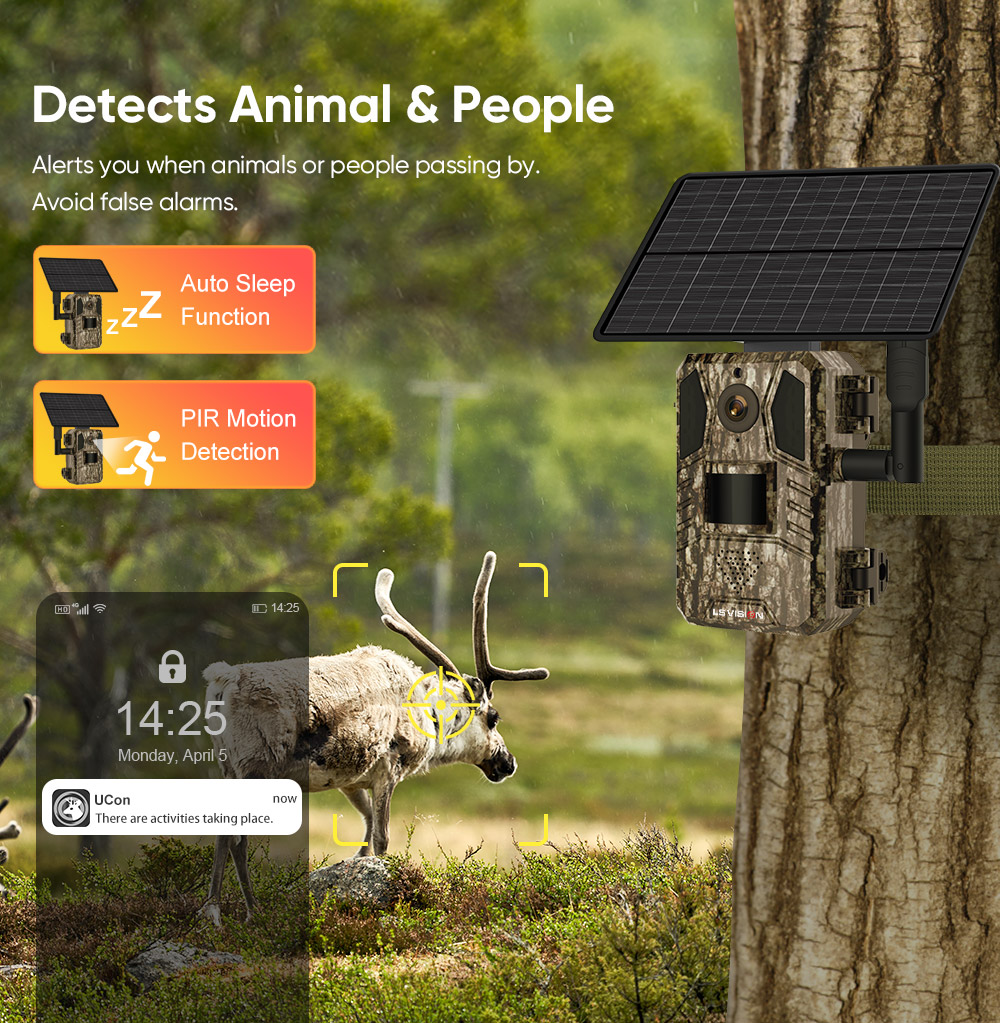Table of Contents
ToggleWhen choosing the right camera for wildlife monitoring, it’s important to understand the unique features of each option. Whether you’re a wildlife enthusiast, professional researcher, or looking to secure your property, the Best wildlife camera, wireless trail camera, and good wildlife camera each offer distinct advantages. With the right camera, you can capture clear images, gather important data, and monitor your surroundings with ease.
In this post, we’ll break down the key factors—pixels, sensor sensitivity, battery life, and wireless transmission distance—to help you make the best choice for your needs. Understanding these elements will ensure you invest in a camera that meets both your budget and performance expectations.

1. Pixels and Image Quality
The Best wildlife camera typically stands out in terms of image quality, offering superior pixel counts to capture every tiny detail. These cameras are designed to present the fine hair and unique textures of animals, making them ideal for those who want to document wildlife in its full splendour. For example, the LS VISION hunting camera provides high-definition image capture that helps researchers and wildlife lovers observe even the smallest creatures in their natural habitats.
On the other hand, the good wildlife camera may not always offer the highest pixel count, but it still delivers satisfactory images at a more affordable price. While it may lack some of the finer details in comparison to premium models, it can still serve as a reliable tool for general wildlife monitoring.
The wireless trail camera, known for its convenience, also provides good-quality images, but the emphasis is more on functionality and real-time transmission rather than ultra-high-definition. These cameras are perfect for capturing wildlife behaviour without needing to visit the site frequently. The wireless transmission capability allows users to monitor animals from a distance, making them highly efficient for remote areas where regular visits aren’t feasible.
2. Sensor Sensitivity
When it comes to detecting movement, sensor sensitivity plays a significant role. The Best wildlife camera typically comes with a highly sensitive sensor that can capture the slightest motion, even in low-light conditions. This is ideal for wildlife enthusiasts who need their cameras to perform in challenging environments such as dense forests or at night.
For those who are more budget-conscious, the good wildlife camera may have a slightly lower sensor sensitivity. While this might not catch every single movement, it still does a decent job of detecting larger wildlife in its range. This makes it a good choice for beginners or those who do not require the highest level of precision.
The wireless trail camera excels in this department, as it is designed for real-time, long-distance monitoring. These cameras often come with advanced motion detection algorithms, allowing them to trigger the camera only when something significant is moving. This feature ensures that you don’t waste battery life capturing irrelevant activity, and it ensures timely data collection for remote monitoring.
3. Battery Life
Battery life is another critical factor when choosing the right wildlife camera, especially when working in remote locations. The Best wildlife camera often comes with large batteries (sometimes paired with solar panels) that allow it to run for extended periods without frequent recharging. For example, the LS VISION dual-lens hunting camera, equipped with a 10000mAh battery and a 6-watt solar panel, can operate continuously for weeks or even months.

On the other hand, the good wildlife camera typically has a smaller battery (such as a 7800mAh capacity) that may not last as long as higher-end models. However, these cameras still provide ample performance for short-term monitoring, making them an excellent choice for those on a budget or for those who only need occasional monitoring.
The wireless trail camera has a mixed performance in terms of battery life. While it uses solar panels to extend the battery life, its power consumption is higher due to the wireless transmission capabilities. However, many models are equipped with
energy-efficient systems, such as the LS VISION 4G trail camera, which balances the need for long-lasting performance with efficient power use.
4. Wireless Transmission Distance and Data Sharing
One of the standout features of a wireless trail camera is its ability to transmit images and videos over long distances. Thanks to 4G and sometimes even 5G capabilities, these cameras offer real-time access to captured footage, making them incredibly convenient for remote locations. No longer do you need to physically retrieve your SD cards from cameras located in the wild—you can monitor the footage from the comfort of your home or office.
The Best wildlife camera may not always offer wireless transmission features, but some advanced models are equipped with Wi-Fi or Bluetooth capabilities that allow for easy data transfer. While this may not offer the same range or real-time access as a wireless trail camera, it still allows for relatively convenient data retrieval.
For those who are budget-conscious, the good wildlife camera often lacks advanced wireless transmission capabilities. These cameras typically store images locally on an SD card, which means you’ll need to physically retrieve the card for data access. While this may seem inconvenient, it’s a cost-effective solution for people who don’t need constant remote monitoring.
5. Cost vs. Value
Now, let’s talk about the price tag. The Best wildlife camera often comes at a premium price due to its high-end features, including superior image quality, enhanced sensor sensitivity, and advanced wireless transmission. However, for wildlife researchers or photographers who require top-tier performance, this investment is well worth it.
Meanwhile, the wireless trail camera lies somewhere in between. While it may not always offer the same pixel quality as the Best wildlife camera, it provides excellent value for those who need the flexibility of remote monitoring. The added benefit of real-time data transmission makes it a powerful tool for people looking to keep track of wildlife over large areas without needing to make frequent visits to the camera site.
The good wildlife camera, on the other hand, is much more affordable and offers a solid balance of features at a lower cost. While it may not boast the same high-end specifications as the top-tier models, it can still capture clear images and monitor wildlife effectively, making it an excellent choice for beginners or casual users.

Which Camera Is Right for You?
When choosing a camera, it’s all about what matters most—image quality, convenience, or budget. For the best wildlife camera, look for high-definition images, sensitive sensors, and long battery life. If you need a reliable option on a budget, there are good choices that still offer solid performance. For wireless transmission, the wireless trail camera is ideal for remote monitoring.
By understanding the unique features and advantages of each type of camera, you can make an informed decision that best suits your wildlife monitoring needs. Whether you’re a seasoned wildlife photographer or a first-time user, the right camera can help you capture the beauty of nature in all its glory. For more details, contact LS VISION by email: Jennylee@lishigroup.com or Phone:+86 13662574726.

